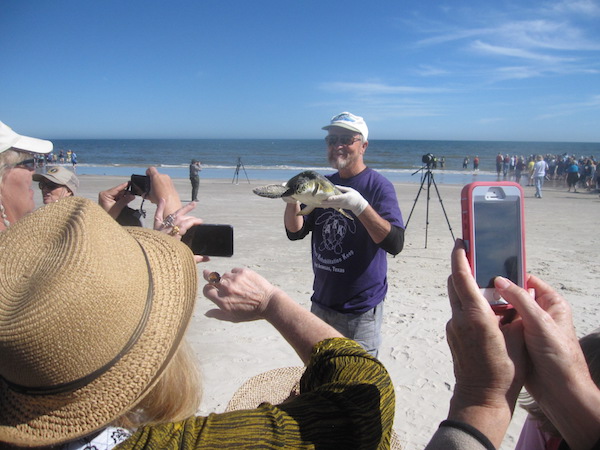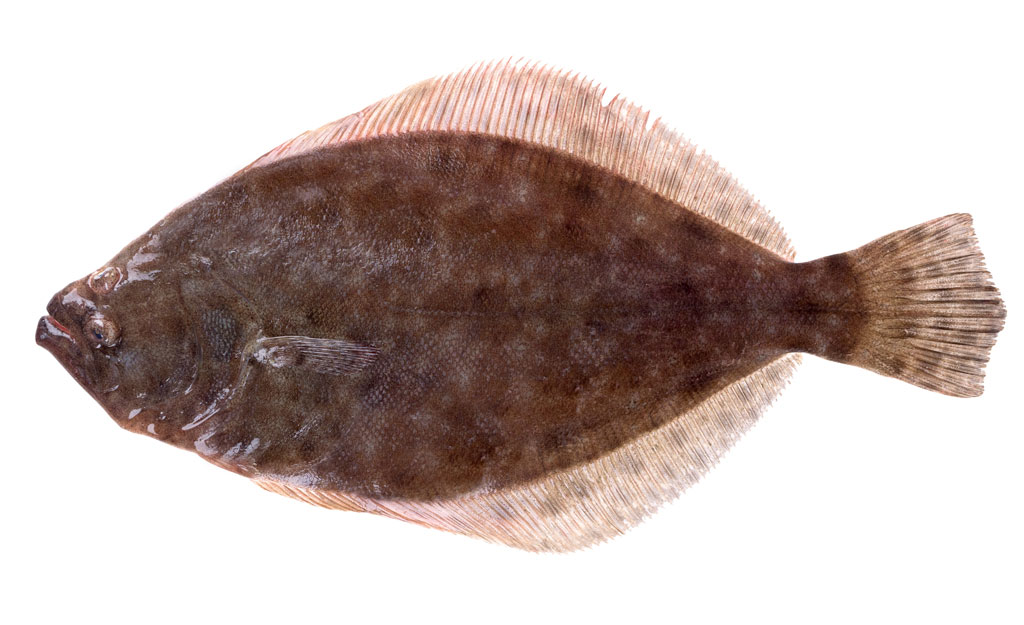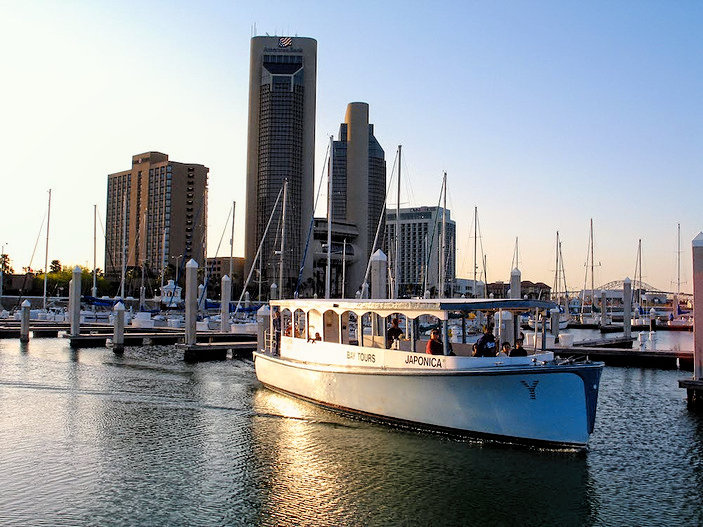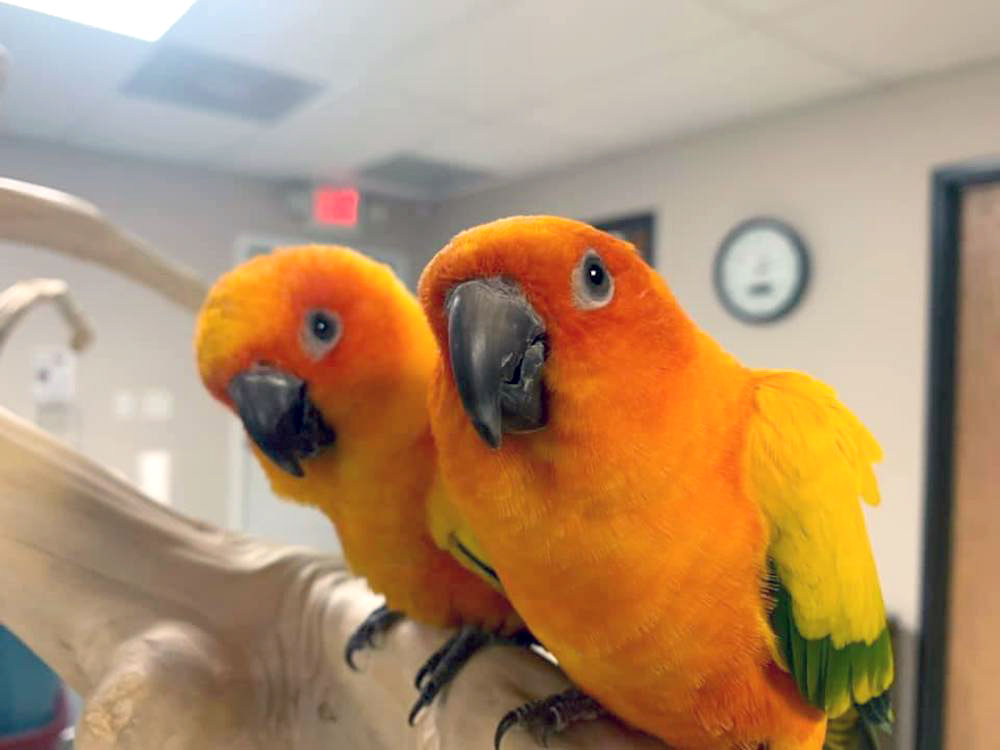
A volunteer brings a rescued sea turtle over to the crowd of spectators at Padre Island National Seashore on Jan. 28, 2015, for a closer look before releasing the animal into the surf. Volunteers released 209 revived cold-stunned turtles into the Gulf in the second release this season. Staff Photo
Around 500 people pointed cameras and smartphones at volunteers holding aloft sea turtles about to be released into the Gulf. As shutters clicked, each of the 209 formerly cold-stunned turtles were lowered into the surf and released into the warmer waters along the Padre Island National Seashore. Most of the rehabilitated turtles were found motionless during recent cold snaps in nearby bays.
“We’re not worried about the upcoming cold front affecting them again,” park superintendent Mark Spier said when asked about this weekend’s forecast. “The waters here are deeper and warmer.”
A line of about 30 cars waited for a turn at backing into the crowd and unloading plastic bins of sea turtles that had been warming up for weeks at the Animal Rehabilitation Keep in Port Aransas. While at ARK, each was tagged with a bar code on its left front flipper.
Volunteers wearing latex gloves quickly unloaded three vehicles at a time, some carrying turtles along the roped-off line of spectators for a close up look, some heading straight into the surf. Each waded out about knee deep before giving their turtle a gentle push into the waves.
The public release at Padre Island National Seashore lasted about an hour, involving dozens of volunteers from all over the U.S.
As cold-blooded reptiles, turtles begin to lose their mobility when temperatures drop below 50 degrees for any period of time. Motionless, they wash up on shore during cold snaps and would die unless rescued and slowly warmed. During cold days, volunteers walk the beaches looking for endangered turtles.
Most cold-stunned turtles are found in the bays. Anyone finding a turtle during a cold snap should call the National Seashore at 361-9498173 ext 226 to report its location. Someone will come pick it up and take it to ARK for rehabilitation.
“We hope this front that’s coming won’t stay too cold for too long,” said Donna Shaver, chief of the National Seashore Division of Sea Turtle Science and Recovery. “These cold stunning events are becoming almost annual. When they happen, we have to go out there and find the turtles, rescue them and bring them into rehab.”
Two major cold stunning events have happened so far this winter season, resulting in nearly 700 rescues. Last year, around 11,000 were found.
With only about a month left in the cold-stunning season, Shaver says rangers are now anticipating the spring nesting season, a prelude to summer’s hatchling releases. Nesting season begins in early April and lasts through mid-July.
“If you see a sea turtle on the beach crawling towards the dunes, be cautious, approach slowly and report it immediately to the same number,” she said, referring to the National Seashore’s number at 361-9498173 ext 226. “We will send someone to protect, document and retrieve the eggs for protected incubation. Those are the young turtles that will be part of our public hatchling release programs in the summer.”
Eggs are retrieved and incubated to protect them from predators, Shaver explained. Mother turtles abandon the nests once they lay their eggs.
“The summer hatchling releases are becoming quite an eco-tourism draw to the area,” Shaver said. “You’ll see me there. I’m the one on my hands and knees behind the slowest hatchlings making sure they make it to the water.”





